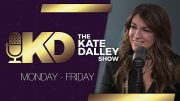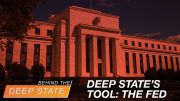The Bureau of Labor Statistics (BLS) reported early Friday morning that the economy continues its surprisingly strong recovery from the greatest shutdown in U.S. history. The report, based on two surveys — the household survey and the establishment survey — said, “Improvements in the labor market reflect the continued resumption of economic activity” following the COVID-inspired shutdown.
Specifically, total non-farm payroll employment rose by 661,000 in September, dropping the unemployment rate by half of one percent, to 7.9 percent. Forecasters were expecting a drop to 8.2 percent.
Most of the gains were in leisure and hospitality, retail businesses, healthcare, and in professional and business services. Job recovery in food services and drinking places has totaled nearly four million over the last five months.
This comes on the heels of other reports and surveys earlier this week showing the remarkable strength of the U.S. economy following the shutdown. On Wednesday, the Labor Department reported that the number of Americans seeking unemployment benefits fell last week to 837,000, down from 873,000 the week before.
The recovery compares favorably to the economic recovery from the Great Recession (December 2007 to June 2009) under the Obama/Biden administration. Back then, it took more than two years for the economy to regain half the jobs that were lost, and more than four years before the jobs market restored all of them.
As the economy is largely dependent upon the American consumer, it’s worth noting that his confidence jumped in September by the biggest number recorded in 17 years — 101.8, up from 86.3 in August. Economists were expecting a reading of just 89.6.
And Friday’s jobs numbers reported by the BLS closely matched the 770,000 new jobs created last month as reported by payroll processor ADP.
In addition, business conditions in the Chicago area improved greatly as well when measured by the Chicago Purchasing Managers Index (PMI), also released on Wednesday. The index jumped from 51.2 in August to 62.4 in September, exceeding economists’ forecasts of just 52. All five components that make up that index were higher in September, especially in new orders and production.
The “October surprise” most voters are expecting will come in the form of good news from the Commerce Department. It is expected to report just days before the election that the U.S. economy grew at an astonishing 35 percent annual rate in the third quarter. All of this continues to bode well for President Trump’s reelection chances, as most voters will do what they have traditionally done on Election Day: vote their pocketbooks.




